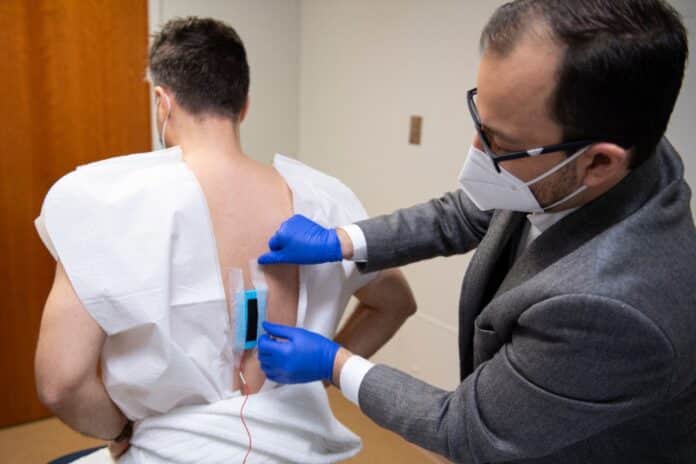Dr. Francisco Romo-Nava’s research focuses on how the brain communicates with the body in psychiatric disorders. He believes disruptions in this communication may contribute to mood, eating, or anxiety disorders.
Neuronal pathways from the spinal cord convey information to the brain, guiding mood regulation. In conditions like major depressive disorder, an overload of information through these pathways could be a contributing factor. Understanding these brain-body interactions is crucial for addressing various psychiatric disorders.
Romo-Nava said, “For example, chronic stress could lead to a hyperactive brain-body circuit that eventually burns the system out and prevents it from adjusting itself effectively and optimally.”
The research team, led by Dr. Francisco Romo-Nava from University of Cincinnati developed a noninvasive spinal cord stimulation method to modulate the interaction between the brain and body. This approach, for which a patent was obtained in 2020, aims to decrease information flow in the brain-body circuit.
The spinal cord stimulation helps the brain regulate itself by reducing noise or hyperactive signaling associated with depressive syndromes. The investigational device, no larger than a shoe box, involves placing active and return electrodes on the patient’s back and right shoulder.
With funding from a Brain & Behavior Research Foundation NARSAD Young Investigator Award, Dr. Romo-Nava conducted a pilot study to assess spinal cord stimulation’s feasibility and tolerability for major depressive disorder. Twenty patients participated, half receiving active stimulation and half a less impactful version. The sessions, held three times a week for eight weeks at the Lindner Center of HOPE, totaled 24 spinal stimulation sessions.
In the pilot study, Dr. Romo-Nava focused on the feasibility and safety of spinal cord stimulation for depression. Patients tolerated the initially prescribed dose well, and the low current used is ten times smaller than the one causing tissue damage.
Mild side effects, such as skin redness and brief itching, were temporary and didn’t persist beyond sessions. The virtual reconstruction indicated that the current reached spinal gray matter but did not reach the brain directly. These findings encourage further exploring this intervention’s optimal dose and session frequency.
Romo-Nava said, “That supports our hypothesis that the modulation of these information pathways may induce an effect on the mood-relevant areas in the brain. So, it is not the current that reaches the brain; it is the signal change that has an effect. This study does not prove all of these hypothesis components, but we think it’s a great start.”
Patients receiving active spinal cord stimulation showed a more significant reduction in depressive symptoms compared to the control group. However, Dr. Romo-Nava emphasized the study’s limitations due to its small sample size. Positive outcomes indicate therapeutic potential but need confirmation in more extensive studies.
Resting blood pressure remained stable, but diastolic blood pressure decreased after each session, suggesting a potential impact on brain-body interaction. Dr. Romo-Nava highlighted the need for caution in interpreting preliminary signals.
Plans involve seeking funding for an expanded trial and developing a portable stimulation device, focusing on determining the optimal dose, frequency, and conditions for treating psychiatric disorders if safety and effectiveness are confirmed in further studies.
Journal reference:
- Romo-Nava, F., Awosika, O.O., Basu, I. et al. Effect of noninvasive spinal cord stimulation in unmedicated adults with major depressive disorder: a pilot randomized controlled trial and induced current flow pattern. Molecular Psychiatry. DOI: 10.1038/s41380-023-02349-9.
